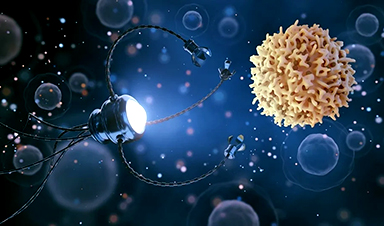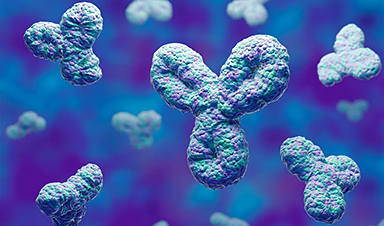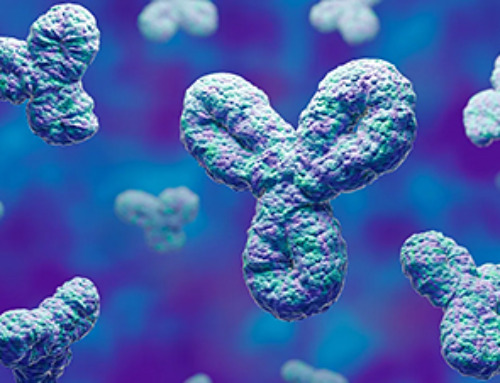Nanoparticles, tiny structures, can be utilized to carry substances to parts of the body — for instance, to provide a chemotherapy drug to a tumor.
Even though such “nanomedicine” showed promise to enhance cancer therapeutics, the survival perks of clinically approved nanomedicines are often modest compared to that of conventional chemotherapy.
A new study reported in the Journal of Controlled Release denotes that nanomedicine might offer extra advantages if it is has been administered at lower and more frequent doses — known as metronomic dosing — instead of the standard maximum tolerated dose of present treatments.
Nanomedicine and metronomic therapy have been regarded as two different approaches to treat cancer. Our analysis suggests that these two approaches can be viewed using the same unified framework as strategies to enhance treatment.
Rakesh K. Jain PhD, Study Corresponding Author and Director, E.L. Steele Laboratories for Tumor Biology, Massachusetts General Hospital
Jain is also an Andrew Werk Cook Professor of Radiation Oncology at Harvard Medical School.
Jain describes that metronomic therapy might help normalize the tumor microenvironment. This implies that it helps in rectifying a few of the abnormalities that develop around tumors and safeguarding the tumor and promoting its spread.
For instance, metronomic therapy appears to enhance blood vessel function and immune activation within a tumor while tumors can transmit signals that settle normal blood flow and block immune cell responses (both of which make them hard to treat). New preclinical studies indicate that nanomedicines can result in similar variations in the tumor microenvironment.
In this study, we hypothesized that nanoparticle formulations, given the controlled release of their payload and the long blood circulation time, can trigger the same cascade of activities as metronomic therapy.
Rakesh K. Jain PhD, Study Corresponding Author and Director, E.L. Steele Laboratories for Tumor Biology, Massachusetts General Hospital
With the help of a mathematical framework and experiments performed in mice, the researchers illustrated that both methods can act as “normalization strategies” to impact the tumor microenvironment and enhance cancer treatments.
Furthermore, in mice with triple negative breast cancer or fibrosarcoma, Doxil — a nanomedicine that is approved to treat metastatic breast cancer and comprises of doxorubicin encapsulated in a lipid sphere — administered via a metronomic schedule could overcome tumor resistance that is normally seen when Doxil is provided through a standard dosing schedule.
Also, a metronomic schedule enhanced the efficacy of the combination of Doxil plus a kind of immunotherapy known as an immune checkpoint inhibitor.
Nano-immunotherapy, which combines nanomedicines with immunotherapy, has high potential to improve patient outcomes, and for this reason, understanding the mechanisms of resistance to and development of strategies to enhance nano-immunotherapy in breast and other cancer types is urgently needed. The results of this work could be a basis for the planning of future clinical studies to improve the efficacy of nano-immunotherapy regimens.
Triantafyllos Stylianopoulos PhD, Study Co-Corresponding Author and Director, Cancer Biophysics Laboratory
Triantafyllos Stylianopoulos is also an associate professor at the University of Cyprus.
The outcomes indicate that integrating nanomedicines with metronomic scheduling can result in a strong attack against hard-to-treat tumors. By acting collectively to normalize the tumor microenvironment, these two strategies provide drugs with a better chance of obtaining cancer cells and targeting them in an efficient manner.
News
Specially engineered antibody delivers RNA therapy to treatment-resistant tumors
Elias Quijano, PhD; Diana Martinez-Saucedo, PhD; Zaira Ianniello, PhD; and Natasha Pinto-Medici, PhD, there are 25 other contributors, most from Yale's Department of Therapeutic Radiology and from the departments of genetics, molecular biophysics and [...]
Vaccinated women face fewer cervical cancer risks
New data from Denmark shows the HPV vaccine’s powerful long-term impact, while also revealing why cervical cancer screening is still essential. A Danish study published in the journal Eurosurveillance reports that women who received the human [...]
3D-printed implant offers a potential new route to repair spinal cord injuries
A research team at RCSI University of Medicine and Health Sciences has developed a 3-D printed implant to deliver electrical stimulation to injured areas of the spinal cord, offering a potential new route to [...]
Nanocrystals Carrying Radioisotopes Offer New Hope for Cancer Treatment
The Science Scientists have developed tiny nanocrystal particles made up of isotopes of the elements lanthanum, vanadium, and oxygen for use in treating cancer. These crystals are smaller than many microbes and can carry isotopes of [...]
New Once-a-Week Shot Promises Life-Changing Relief for Parkinson’s Patients
A once-a-week shot from Australian scientists could spare people with Parkinson’s the grind of taking pills several times a day. The tiny, biodegradable gel sits under the skin and releases steady doses of two [...]
Weekly injectable drug offers hope for Parkinson’s patients
A new weekly injectable drug could transform the lives of more than eight million people living with Parkinson's disease, potentially replacing the need for multiple daily tablets. Scientists from the University of South Australia [...]
Most Plastic in the Ocean Is Invisible—And Deadly
Nanoplastics—particles smaller than a human hair—can pass through cell walls and enter the food web. New research suggest 27 million metric tons of nanoplastics are spread across just the top layer of the North [...]
Repurposed drugs could calm the immune system’s response to nanomedicine
An international study led by researchers at the University of Colorado Anschutz Medical Campus has identified a promising strategy to enhance the safety of nanomedicines, advanced therapies often used in cancer and vaccine treatments, [...]
Nano-Enhanced Hydrogel Strategies for Cartilage Repair
A recent article in Engineering describes the development of a protein-based nanocomposite hydrogel designed to deliver two therapeutic agents—dexamethasone (Dex) and kartogenin (KGN)—to support cartilage repair. The hydrogel is engineered to modulate immune responses and promote [...]
New Cancer Drug Blocks Tumors Without Debilitating Side Effects
A new drug targets RAS-PI3Kα pathways without harmful side effects. It was developed using high-performance computing and AI. A new cancer drug candidate, developed through a collaboration between Lawrence Livermore National Laboratory (LLNL), BridgeBio Oncology [...]
Scientists Are Pretty Close to Replicating the First Thing That Ever Lived
For 400 million years, a leading hypothesis claims, Earth was an “RNA World,” meaning that life must’ve first replicated from RNA before the arrival of proteins and DNA. Unfortunately, scientists have failed to find [...]
Why ‘Peniaphobia’ Is Exploding Among Young People (And Why We Should Be Concerned)
An insidious illness is taking hold among a growing proportion of young people. Little known to the general public, peniaphobia—the fear of becoming poor—is gaining ground among teens and young adults. Discover the causes [...]
Team finds flawed data in recent study relevant to coronavirus antiviral development
The COVID pandemic illustrated how urgently we need antiviral medications capable of treating coronavirus infections. To aid this effort, researchers quickly homed in on part of SARS-CoV-2's molecular structure known as the NiRAN domain—an [...]
Drug-Coated Neural Implants Reduce Immune Rejection
Summary: A new study shows that coating neural prosthetic implants with the anti-inflammatory drug dexamethasone helps reduce the body’s immune response and scar tissue formation. This strategy enhances the long-term performance and stability of electrodes [...]
Scientists discover cancer-fighting bacteria that ‘soak up’ forever chemicals in the body
A family of healthy bacteria may help 'soak up' toxic forever chemicals in the body, warding off their cancerous effects. Forever chemicals, also known as PFAS (per- and polyfluoroalkyl substances), are toxic chemicals that [...]
Johns Hopkins Researchers Uncover a New Way To Kill Cancer Cells
A new study reveals that blocking ribosomal RNA production rewires cancer cell behavior and could help treat genetically unstable tumors. Researchers at the Johns Hopkins Kimmel Cancer Center and the Department of Radiation Oncology and Molecular [...]





















